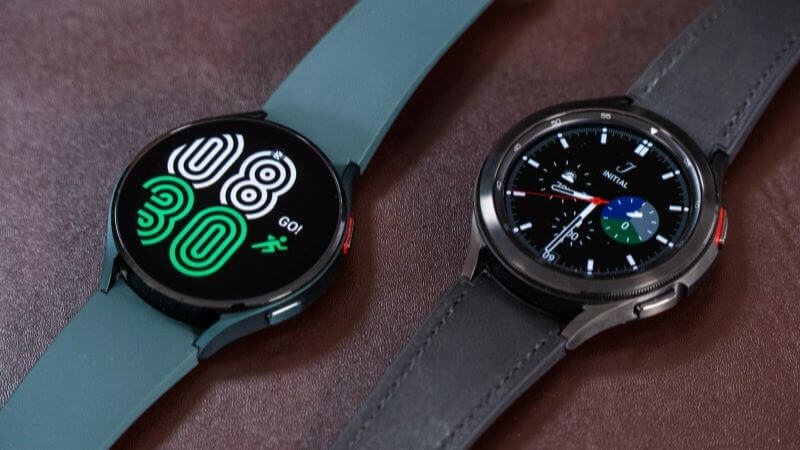The year 2021 was a great year for the wearables industry. The Wear OS 3 platform, which was co-developed by Google and Samsung, was unveiled. Garmin launched a number of wearables with difficult-to-find compromises. Coros has released a watch that has a 60-day battery life and does not require solar charging. However, despite the wearables market’s many successes this year, we’ve identified a few critical areas that might be improved in the coming year. In 2022, we want to see five major areas of improvement from wearables.
1. Longer Battery Life

With “regular” use, some of today’s most popular smartwatches — the Apple Watch, Samsung Galaxy Watch 4, or anything running Wear OS for that matter — can barely last a day or two. That is insufficient, and we should demand more from our wearables.
In this category, Apple is the easiest to choose from. The first Apple Watch had an 18-hour battery life. The Apple Watch Series 7, which came out seven years after the original, is still rated for 18 hours of use. Sure, it charges faster and can do more, but a day’s worth of battery life isn’t ideal — especially after using a wearable that doesn’t require charging every day.
Garmin, Huami, Coros, Xiaomi, and Fitbit all have devices with excellent battery life. Wearables that run on a real-time operating system (RTOS) are far more power-efficient than those that run on watchOS or Wear OS, although these platforms sometimes sacrifice features in exchange for greater battery life.
It’s a terrible choice that wearable customers must make when purchasing a new smartwatch or fitness tracker, but we hope it won’t be the case in the future. In 2022, Apple and Google should place a greater emphasis on battery life. It’s a more compelling selling point than either of them realizes.
2. Focusing On Other Apps

A fitness tracker is more than just the wristband you wear on your wrist. Much, much more. The easiest approach to learn more about the data your wearable collects about your body is to launch the app that comes with it on your smartphone. Regrettably, some businesses approach mobile apps as an afterthought.
Depending on the manufacturer of your wearable, you may have access to an app with a variety of functions, graphs, and important information about your health. Alternatively, you may only have access to the most basic health information, which is presented in a way that is either difficult to grasp or deficient in some way. When it comes to sharing your data with third-party services, the Huawei Health and Xiaomi Wear applications, for example, are two of the least helpful.
Many customers prefer third-party apps like Strava or MyFitnessPal, and some businesses outright refuse to share information with them.
This year, we’ve had more than just data exporting issues. Although the revamped Xiaomi Wear app is attractive, it is not suitable for Xiaomi users in the United States. Translation and conversion difficulties can still be detected in the app today.
Even some of the apps we recommend have minor flaws that might grow into annoyances over time. The apps from Garmin and Coros provide a wealth of data insights and interesting graphs, but their bloated layouts and unclear user interface features can be aggravating.
3. Health Sensors With More Transparency

Fitness trackers aren’t just pedometers anymore; they can monitor everything from your heart rate to your body composition. Companies sometimes get a little carried away with the “hot” sensors of the moment and don’t follow through with how they’re applied.
Pulse oximeters and electrocardiograms (ECGs) were quite popular in 2021. The latter, in particular, has found its way onto everything from high-end smartwatches to the most basic of fitness trackers.
For some people, checking their blood oxygen levels throughout the day can be beneficial, but it is unlikely to be necessary for the majority of users.
The most useful application of SpO2 monitors is during sleep tracking when the sensors can detect potential warning indications of serious diseases such as sleep apnea. Unfortunately, many SpO2-tracking devices only provide the simplest form of blood oxygen monitoring: manual spot checks throughout the day, not even all day or automatically at specified times of the day, let alone at night.
Some firms go to great lengths to have their sensors medically validated before releasing them to the market. Fitbit, Withings, and Apple are among the best in this category.
Although the new Coros Vertix 2 has an ECG monitor, it does not record any ECG data. It’s only used to take a one-minute HRV recording, which is valuable but not what most people think of when they read the term “ECG” on a product page.
These aspects may not seem important to most people, but marketing is a complex business. It’s critical to be transparent with potential buyers about what health sensors track.
4. Not Many Ecosystems Lock-ins

Apple still won’t let you use third-party watch faces on the Apple Watch, and you can’t sync it with Android phones. Ecosystem lock-ins are all too known to Apple users. This year, though, more brands than ever before have embraced the walled garden concept.
Because of Google and Samsung’s new Wear OS 3 interface, the Samsung Galaxy Watch 4 was one of the greatest smartwatches available. However, if you don’t have a Samsung phone, you won’t be able to use some of the functions. Non-Samsung users are unable to utilize the Samsung Health Monitor app, which allows the Galaxy Watch 4’s ECG monitor, which is widely promoted on the Galaxy Watch’s product website. If you don’t have a Samsung phone, you won’t be able to monitor your blood pressure.
Huawei’s new Watch GT 3 is likewise a beautiful piece of technology, but it has some limits depending on the operating system on your smartphone. Users of iOS can only download free watch faces and cannot purchase them.
Limitations like these are things we’ve come to anticipate from wearables in recent years, but we’re hoping that will change in 2022.
5. Better System For USBs

Throughout 2021, the tech sector discussed whether or whether firms should include charging cables with their devices. Why add to the world’s growing e-waste problem by including another USB-C cable that you may or may not use?
With their smartwatches or fitness trackers, companies always offer a charging wire of some sort. However, charging cables aren’t often consistent between businesses’ products, and there aren’t any charging cables that are standardized between manufacturers.
In this way, Fitbit is most likely the worst offender. When you buy a new Fitbit, you’ll almost always need to use the same cable that came with the tracker. The original Versa, Versa Lite, and Versa 2 have different charging cables than the Fitbit Sense and Versa 3. The Fitbit Charge 5 has a different charging cord than the Charge 4, which is different from the Charge 3. (and so on). The Inspire 2, Luxe, and other simple fitness trackers are in the same boat. If Fitbit releases a new wearable, it will be accompanied by a new charging cord.
Xiaomi is in a similar situation, however, its charging wires are only changed every few generations.
The magnetic charging cord is the same for all Apple Watches. The same cables are used by Fossil and Skagen watches. So do Garmin watches and Coros wearables.
In an ideal world, all wearable charging cables would be the same across all firms’ devices. That’s probably too much to expect, so we’re asking Fitbit, Xiaomi, and other big wearable manufacturers to stick to one charging cord at the very least.
Follow Us: Facebook | Instagram | Twitter |
Entertales is on YouTube; click here to subscribe for the latest videos and updates.














